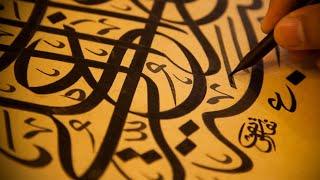Since ancient times, man has sought to record the stages of his life verbally and in writing, and the invention of writing about 5,000 years ago was a huge shift in the history and reality of human beings, and codification began with symbols and images, before the phonetic alphabet developed for words that record thoughts, feelings, sciences and arts.
The Jordanian writer and poet, Amjad Nasser, considers that humanity could not have been achieved without words and writing. The person’s departure from his emptiness is not in discovering the pronunciation, but rather by writing down this pronunciation and transforming it into an expression.
Nasser continues in a previous article on Al-Jazeera Net entitled "A New Turn in the History of Writing" that writing "needs a mediator to move, the first mediator - as we know - was the clay figures, the scribes of the first tablets were engraving on the clay while it was soft with a fine-toothed tool that was said to be from Reeds, were they called pens? Perhaps, but those engravings on clay are the first forms of circulating writing, and those clay tablets are the first steps of the word’s long journey, and those sharp, fine-toothed tools (of reeds or otherwise) are the first pens.”
Similarly, a recent report published in the Spanish Curiosfera website considered writing one of the most important achievements made by humanity, but perhaps not all of us know the history of writing and how it was discovered.
Who invented writing?
The site stated that knowing the exact identity of who discovered writing is something that humans cannot do today, but this does not prevent that we have a somewhat approximate idea, thanks to studies conducted on the origin of writing in Mesopotamia more than 5 thousand years ago, and in Indeed, the invention of writing is linked to commerce and the organization of society, that is, to the birth of civilization.
Early societies were organized around priestly classes, and priests were obliged to keep a record of what was stored, bought, and sold, which until then had been kept by heart.
The origin of writing
Most experts believe that the origin of writing and its beginnings go back to Mesopotamia in the ancient tablets found in the Sumerian cities on the banks of the Tigris and Euphrates rivers.
The oldest of these tablets belonged to Uruk, a leading city in urban life, writing, and public administration, with a population of about 40,000.
In addition, it is difficult to date these lists even though they belong to the period between 3400 and 3200 BC.
Several conditions combine in a city such as Uruk (in ancient Mesopotamia, and in present-day Iran) perhaps the first in history since its inception around 6500 BC, including the development of agriculture and irrigation, the invention of the wheel and the use of domestic animals.


In the fifth millennium BC, the ancients began writing signs in the cuneiform language on clay using awl (hand needle) in order to identify goods and their quantity as well. Two copies were made of them, one for the temple and the other for the merchant.
In this way, the priests, who controlled production, kept a record identifying the seller, the buyer, and who gave their surplus production to the ancient temples.
the evolution of writing
The Akkadians (in Mesopotamia) first, and the Hittites (lived in Anatolia and the northern Levant) later benefited from the Sumerian syllabic system, and added it to their cuneiform writings, and these two languages are considered pioneers, each in its own way.
The Hittite script provides us with the oldest writings found in the Indo-European languages around 1600 BC, from which Greek and Sanskrit descend.
On the other hand, the Akkadian language is the first known Semitic language inherited by the Assyrians and Hebrews, as well as the Phoenicians, Aramaic, Arabs and Ethiopians.
The first known alphabet of Semitic languages arose in 1300 BC, specifically in the Kingdom of Ugarit located between Syria and Palestine, or as it is called the land of Canaan, and many tablets written in 8 different languages were found, one of which is of Semitic origin and has an alphabet consisting of 30 letters.
On the other hand, it is possible that the alphabet was born in Egypt by workers of Semitic origin, starting with the hieroglyphic writing around 800 BC, and returning to the land of Canaan around 1400 BC, and from here came the Ugaritic alphabet around the year 1300 BC.
On the other hand, in East Asia, the Chinese developed their own writing system during the Shang Dynasty (they ruled in the second millennium BC), and some experts believe that the first signs of writing in China could be in 6 thousand BC, but the first confirmed evidence dates back to 1600 BC coinciding with the rule of the Shang Dynasty.
It is noteworthy that the scribes of antiquity were not the only people who knew how to write, those who traveled around the cities and wrote were also educated people who knew all the legal procedures and forms that had to be filled out and how to reach the higher levels.
numbers appear
The first recognized figures date back to some clay tablets discovered at the sites of Susa and Uruk (in present-day Iran) 5,000 years ago.
Certainly, humans began counting much earlier by piling stones or marking the wall at least 30,000 years ago, but early and ancient annotations awaited the invention of writing.
Initially, numbers were used only for counting and signs were added up to the tenth, the number to which a different sign was assigned.
The invention of zero may be due to the Chinese, Indians or Arabs, and the Arabic numbering system has spread throughout Islamic countries, and the Italian Fibonacci - who studied in Algeria in the early 13th century - introduced it to Europe, where it is still influential until now.
invention of paper
Before making paper, humans used to write on tablets, pottery, stones, animal bones, plant leaves, leather, and parchment. The Sumerians in southern Mesopotamia made clay tablets and left them to dry to write on.
On the other hand, the ancient Egyptians developed writing on the bark of the papyrus plant, from which it was transmitted to ancient Greece and Italy.
On the other hand, China kept the secret of making paper, but with the progress of time the Muslims transferred the Chinese technology and developed it into a major industry, and played the biggest role in popularizing this industry and transferring it to Europe, which paved the way for the printing revolution.
